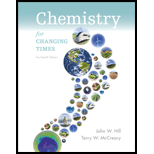
Concept explainers
(a)
Interpretation: To name of following alkyl group should be identified.

Concept Introduction: While naming hydrocarbons, we use several prefixes in order to state the total number of carbons present. For example: In propane, butane, pentane, the suffix -ane represents hydrocarbon chain and prefixes, -prop, -but and -pent represents three, four and five carbons in the hydrocarbon chain. Also, if there is any substituent or group present at any position then the naming of hydrocarbon is done in such a way that it represents the position of that substituent.
(b)
Interpretation: To name of following alkyl group should be identified.

Concept Introduction: While naming hydrocarbons, we use several prefixes in order to state the total number of carbons present. For example: In propane, butane, pentane, the suffix -ane represents hydrocarbon chain and prefixes, -prop, -but and -pent represents three, four and five carbons in the hydrocarbon chain. Also, if there is any substituent or group present at any position then the naming of hydrocarbon is done in such a way that it represents the position of that substituent.
Want to see the full answer?
Check out a sample textbook solution
Chapter 9 Solutions
Chemistry For Changing Times (14th Edition)
- 3 attempts left Check my work Draw the products formed in the following oxidative cleavage. [1] 03 [2] H₂O draw structure ... lower mass product draw structure ... higher mass productarrow_forward2. Draw the missing structure(s) in each of the following reactions. The missing structure(s) can be a starting material or the major reaction product(s). H-Br CH2Cl2arrow_forwardWrite the aldol condensation mechanism and product for benzaldehyde + cyclohexanone in a base. Then trans-cinnamaldehyde + acetone in base. Then, trans-cinnamaldehyde + cyclohexanone in a base.arrow_forward
- Complete the two step reaction show the mechanism for all steps.arrow_forwardIdentify whether the carbocation or alkyl halide is methyl, primary, secondary, or tertiary.arrow_forwardDraw the products formed when the following alkene is treated with 03 followed by Zn, H₂O. Click the "draw structure" button to launch the drawing utility. draw structure ...arrow_forward
- Calculate the pH of 0.600 M solution of CH5N (Kb=4.37 x10-4) Hint: use assumption and check it!arrow_forwardDraw all stereoisomers formed when the following alkene is treated with mCPBA. Be sure to answer all parts. Part 1: How many stereoisomers of the product are possible? 1 Part 2 out of 2 Draw the product of the reaction, including stereochemistry. edit structure ...arrow_forwardA 3.30x10-2 M solution of monoprotic acid HA has a pH of 3.62. a) what is the percent ionization of this acid? b) what is the Ka of this acid?arrow_forward
 ChemistryChemistryISBN:9781305957404Author:Steven S. Zumdahl, Susan A. Zumdahl, Donald J. DeCostePublisher:Cengage Learning
ChemistryChemistryISBN:9781305957404Author:Steven S. Zumdahl, Susan A. Zumdahl, Donald J. DeCostePublisher:Cengage Learning ChemistryChemistryISBN:9781259911156Author:Raymond Chang Dr., Jason Overby ProfessorPublisher:McGraw-Hill Education
ChemistryChemistryISBN:9781259911156Author:Raymond Chang Dr., Jason Overby ProfessorPublisher:McGraw-Hill Education Principles of Instrumental AnalysisChemistryISBN:9781305577213Author:Douglas A. Skoog, F. James Holler, Stanley R. CrouchPublisher:Cengage Learning
Principles of Instrumental AnalysisChemistryISBN:9781305577213Author:Douglas A. Skoog, F. James Holler, Stanley R. CrouchPublisher:Cengage Learning Organic ChemistryChemistryISBN:9780078021558Author:Janice Gorzynski Smith Dr.Publisher:McGraw-Hill Education
Organic ChemistryChemistryISBN:9780078021558Author:Janice Gorzynski Smith Dr.Publisher:McGraw-Hill Education Chemistry: Principles and ReactionsChemistryISBN:9781305079373Author:William L. Masterton, Cecile N. HurleyPublisher:Cengage Learning
Chemistry: Principles and ReactionsChemistryISBN:9781305079373Author:William L. Masterton, Cecile N. HurleyPublisher:Cengage Learning Elementary Principles of Chemical Processes, Bind...ChemistryISBN:9781118431221Author:Richard M. Felder, Ronald W. Rousseau, Lisa G. BullardPublisher:WILEY
Elementary Principles of Chemical Processes, Bind...ChemistryISBN:9781118431221Author:Richard M. Felder, Ronald W. Rousseau, Lisa G. BullardPublisher:WILEY





